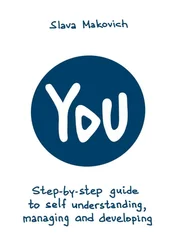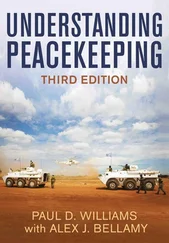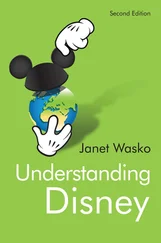Another character with an asexual aura who predates Gilligan and also may outlive Sheldon is Jughead Jones, Archie’s male sidekick in the popular comic series created in the 1940s. Jughead is consumed with interests (hamburgers, mostly) other than the usual teenage preoccupation of finding and keeping mates. In the modern incarnation of this series, there has been a suggestion that Jughead is gay—for instance, a male character “comes out” to him (IBNLive.com, 2011, April 2)—but I expect that the original writers wanted Jughead presented asexually. Thus, although the “asexual” word likely did not creep into the writers’ editorial meetings (at least those in the early years), Jughead was likely created as an asexual (and aromantic) contrast to Archie, who was girl crazy.
As mentioned, women have also often been portrayed in art and the popular media as asexual—for example, the iconic virgin. Such icons are presented in high art (e.g., religiously inspired art of the Virgin Mary) to highlight virtues, but also in more popular fiction to increase tension and drama. For example, iconic asexual female characters seem to occur with regular frequency in dramas or comedies—perhaps a naïve ingénue or a nerdy, priggish librarian (complete with thick glasses). These portrayals may enhance the dramatic/comedic arc of a story, because these asexual female characters may likewise brush up against a sexual world. They also offer a glimpse, or at least a fantasy, of an asexual character possibly becoming sexualized. No doubt such glimpses, if they are realized, have a titillating appeal to some heterosexual male audiences.
That asexual characters seem to be of a “type” or routinely have certain characteristics—such as the asexual “man-child” (Gilligan), the intellectual nerd (Sheldon), the asexual prig (the librarian)—may speak to our expectations of how asexuality often manifests itself in people in the real world, even if these expectations are often distorted stereotypes.
The history of asexuality should also include some mention of the emergence of asexual identities. As discussed in chapter 6, the identification as an asexual person (“I am asexual”) is probably a recent phenomenon, and largely a Western one at that. [13] A case in point: in the 1960s, I doubt viewers would likely have identified Gilligan as an “asexual.”
Use of the word “asexual” to describe an individual may also be a relatively modern, Western phenomenon. This modern use of the term likely emerged from an increased public awareness of asexuality in response to recent media attention to one of my asexuality papers and a popular scientific paper on asexuality by Sylvia Pagan Westphal, both of which appeared in 2004 (Bogaert, 2004; Westphal, 2004). It also occurred because of David Jay, who is, speaking of history, an important figure in the modern story of asexuality. He is an asexual man, the founder of the Asexual Visibility and Education Network (AVEN), and he has been assertive in promoting awareness of asexuality.
It is unclear exactly how many people in the modern world identify as asexual (see chapter 10), but the emergence of this term, and an asexual identity in general, probably fills an important psychological void for a number of people not comfortable with traditional categories of sexual identities (CNN.com, 2004).
One of this book’s themes is that the study of asexuality informs the study of sexuality. At a basic biological level, this is true: The study of asexual species and their adaptability—or lack of it—in changing environments gives clues as to why sexuality exists. Within a sexual species, asexual variation also informs sexuality. For example, sexuality researchers are finding some evidence that the potential mechanisms—such as prenatal hormones organizing brain sites—underlying an asexual orientation are the same as those underlying traditional sexual orientations (i.e., gay versus straight). It is certain that many humans never mated throughout history, but it is unclear how many people were asexual—that is, lacked sexual attraction or desire—for much of human history. In recent times, however, evidence of asexuality is clear. Asexuality has also been portrayed throughout the history of art. That humans create asexual figures and characters attests to a common understanding that sexual variation exists, and that sexuality, at least in art, sometimes needs a dramatic foil.
CHAPTER 4
The Prevalence of Asexuality
As if! I do not know if anyone has actually said those exact words to me. If not, they should have, because they capture the reaction I have gotten from some people when I have told them the prevalence rate of asexuality (1 percent), based on my first published study of asexuality in 2004 (Bogaert, 2004). In short, some people’s reaction has been one of disbelief (Fulbright, 2009, January 12), questioning that as many as 1 percent or more of human beings could be asexual. Frankly, I think that some people would question that anyone could be truly asexual, even if I had reported the rate at .00001 percent.
The 1 percent figure is intriguing, I must admit, perhaps if only because it is a memorably round number. Such round numbers, be they large or small, do seem to have a capacity to intrigue and stimulate debate, if not to polarize. Indeed, I think one of the reasons why I was drawn to publishing these data on asexuality was because this nice round number did, in fact, intrigue me. Hmmm , I thought. Could this figure be correct? Could it be true that such a mighty minority has been overlooked on the sexual landscape? Could it even be that 1 percent is an underestimate?
This figure is also likely one of the reasons why the media chose to publicize the asexuality story, or perhaps the reason why the story “had legs.” It is a good headline that reads, “Study: 1 in 100 adults asexual” (CNN.com, 2004, October 14).
In this chapter, I discuss the prevalence of asexuality. What exactly is the correct figure, and why does it matter? I also explore this “As if!” reaction. Specifically, why do some people have this reaction, and what does it reveal about the way we think and about our culture? In other words, what conclusions can be drawn about the human psyche and our society if some people do not believe that there could be a small group of people who are so different from them, sexually speaking?
Traditionally, prevalence research in the sexual orientation field has centered on gays and lesbians, who constitute a more visible and well-known sexual minority than asexual people. Most early estimates of same-sex sexuality were loosely based on data collected by Alfred Kinsey, the pioneer sex researcher, who, along with his colleagues, interviewed thousands of Americans from the 1930s through the 1950s (Kinsey, Pomeroy, & Martin, 1948; Kinsey, Pomeroy, Martin, & Gebhard, 1953). The most widely cited estimate of same-sex sexuality that was loosely based on this work was 10 percent (Marmor, 1980; Voeller, 1990). Note that this 10 percent figure was only “loosely based” on Kinsey’s work, because it actually only referred to the percentage of men (and not women) in his original sample who had reported predominantly same-sex activity, and Kinsey himself never claimed that 10 percent of Americans were gay.
Like 1 percent, a 10 percent figure is a memorably round number that draws people in. Thus, it also has “had legs.” Over the years, gay and lesbian people have used a somewhat cheeky and/or subversive code [14] This code is subversive at least in part because it turns the heterosexual world’s discrimination against gays and lesbians on its ear. It is empowering (for some) because it often “steals” back the negative words (e.g., queer) that others have used against gays and lesbians for many years, and thus reclaims for gays and lesbians the right to use their own language in their own way.
to identify themselves (e.g., “queer,” “bent,” “friends of Dorothy”), and, not surprisingly, some have chosen to rally around this 10 percent figure. For example, some gay people claim proudly to be a member of the “Ten Percent” club or society (Hecox, n.d.). There are also postmodern, consumer riffs on this figure and its meaning for gay and lesbian people, in which, for example, shopping online in gay-friendly establishments allows one to snag a 10 percent discount (10percent.com, n.d.).
Читать дальше












